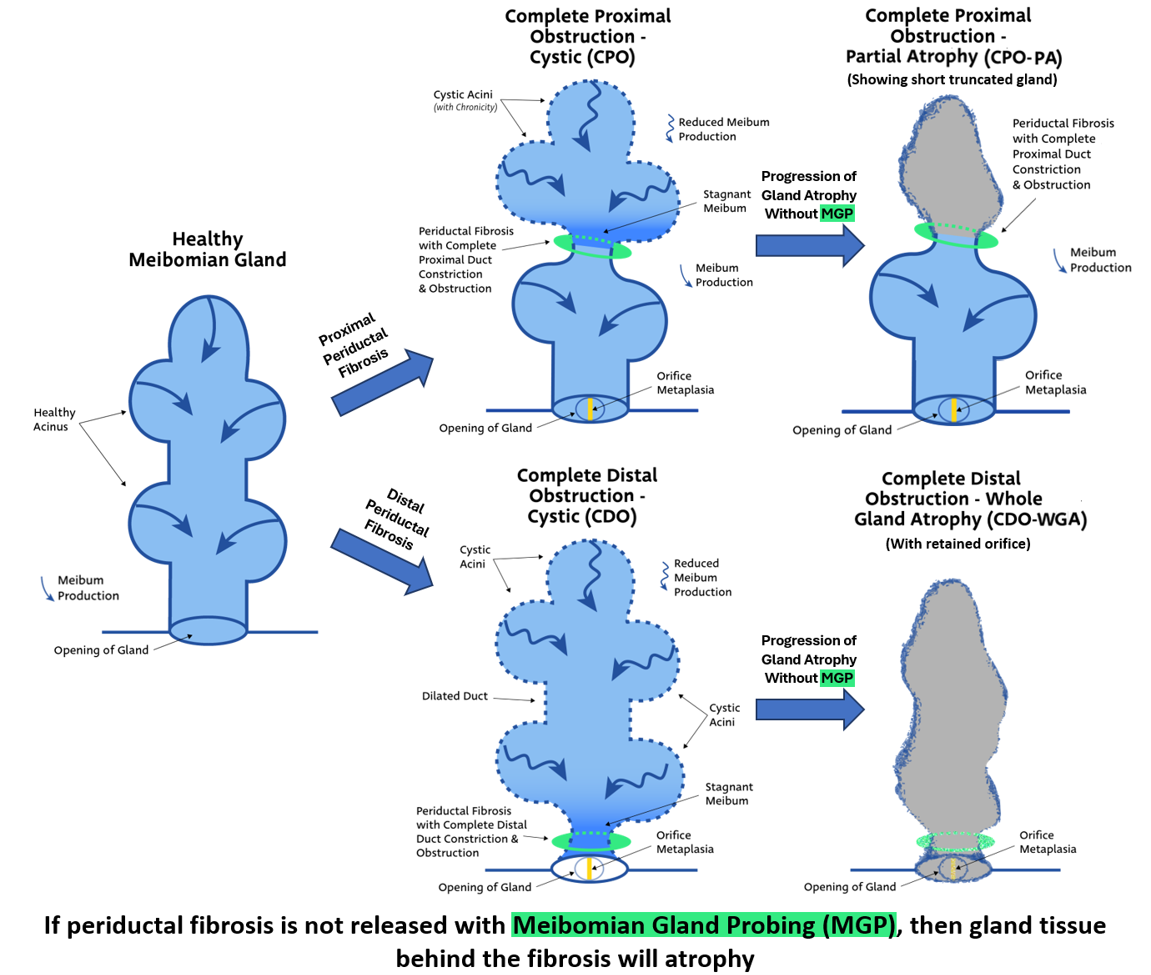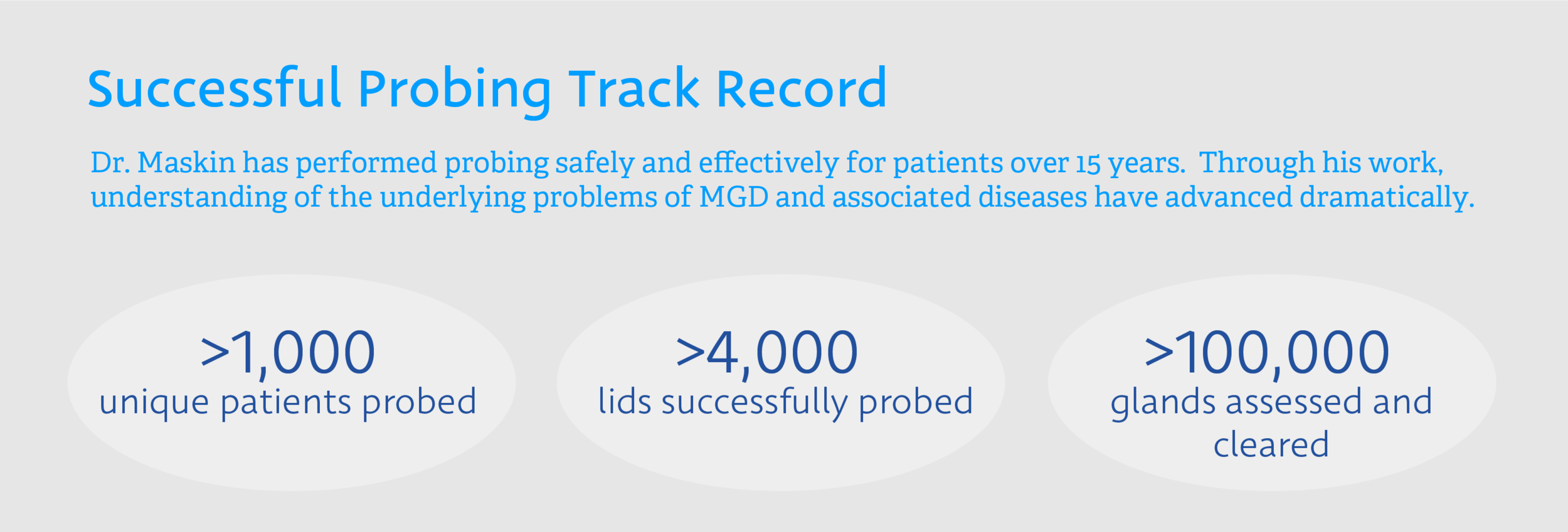Treatment of Meibomian Gland Dysfunction (MGD)
What are Meibomian Glands? How do they affect my eyes and why are they important?
At least 350 million persons worldwide, and in some Asian countries as many as 70% of their population, have Dry Eye. Of that number, 86% are estimated to have Meibomian Gland Dysfunction (MGD) as a major or sole factor causing dryness and discomfort.
MGD presents with a variety of potential symptoms including:
-
Burning and stinging eyes
-
Lid tenderness
-
Redness and vascularization of eyes
-
Foreign body sensation
-
Photophobia (sensitivity to light)
-
Soreness
These symptoms can result in financial struggles from employment loss, destruction of social ties, and onset or progression of mental health issues, like depression and anxiety. Proper diagnosis and treatment of Dry Eye, including MGD, is essential for each person’s health and well-being.
What therapy can I use to treat my MGD?
In recent years, the importance of adequate meibum secretion has gained additional attention in the eye care community. Developments in treatment focus primarily on application of heat and pressure to the glands in the aim to melt oil blockages and allow meibum to flow freely once again.
This approach may work for some glands, however Dr. Maskin’s discoveries illuminate a key element of meibum blockages – nonvisible (occult) scarring around gland ducts. Just as an elastic will constrict and block a tube from expelling liquid, scarring prevents Meiboiman Glands from releasing meibum onto the eye surface.
In recent years, the importance of adequate meibum secretion has gained additional attention in the eye care community. Developments in treatment focus primarily on application of heat and pressure to the glands in the aim to melt oil blockages and allow meibum to flow freely once again.
This approach may work for some glands, however Dr. Maskin’s discoveries illuminate a key element of meibum blockages – nonvisible (occult) scarring around gland ducts. Just as an elastic will constrict and block a tube from expelling liquid, scarring prevents Meiboiman Glands from releasing meibum onto the eye surface.
This scarring constricts the duct by growing circumferentially around it, creating resistance inside the duct that blocks adequate oil flow and elevates pressure within the gland. This additional pressure results in lid tenderness and inflammation, as well as gland atrophy.
Scarring may occur at various points along the gland, allowing glands to be partially functional in oil secretion or entirely blocked. This important discovery explains why glands may produce some oil but still not be a healthy gland. The images of glands presented above illustrate these principles.
Without releasing the duct of this scar tissue prior to further treatment, this nonvisible problem only deteriorates more rapidly and exacerbates the severity of symptoms and, by extension, depth of psychosocial impacts like stress, anxiety, depression, and even suicidal ideations.



